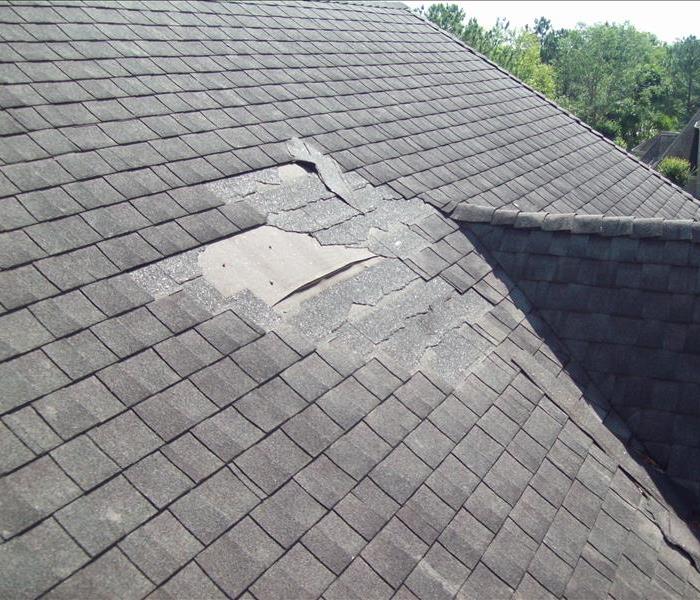How To Protect a Damaged Roof
4/28/2020 (Permalink)
How To Protect Your Roof and Limit Secondary Damage
Severe weather is a leading cause of roof damage in Chalfont, PA. High winds tear off shingles or loosen flashing. Fallen tree limbs and flying debris can also damage materials and create punctures that lead to leaks. Homeowners should take the following measures as soon as possible to protect a damaged roof and limit secondary damage.
Determine the Extent of Damage
The first step toward protecting a roof is to identify the damage. While a homeowner may be able to perform a casual inspection, a roofing expert or residential storm damage specialist can point out signs that may be less evident. Here are a few of the most common types of damage caused by severe storms:
- Damaged shingles
- Missing shingles
- Loose or missing flashing
Shingles that are bruised, cracked, or ceased or show signs of granule loss may be more likely to leak. Wind damage may result in loose or missing shingles or flashing.
Tarp Over Holes or Punctures
Major roof damage can immediately result in leaks. Homeowners should hire professionals to tarp over any impact damage or damaged roofing materials. Performing this process successfully requires at least two people and supplies that may not be readily available at a residence.
Schedule Emergency Roof Repair
Homeowners should schedule roof repair as soon as possible. A professional tarp job should last up to 90 days. The sooner a roof is repaired, the lower the risk that a tarp will become loose or damaged during a storm.
Tarping over roof damage is the best way to keep water out until a repair can take place. If a roof has already started to leak, a homeowner should take steps to mitigate damage until the roof is fixed and storm restoration can begin. Regular roof inspections can minimize the risk of damage to the roof and structure of a residence in Chalfont, PA.





 24/7 Emergency Service
24/7 Emergency Service
